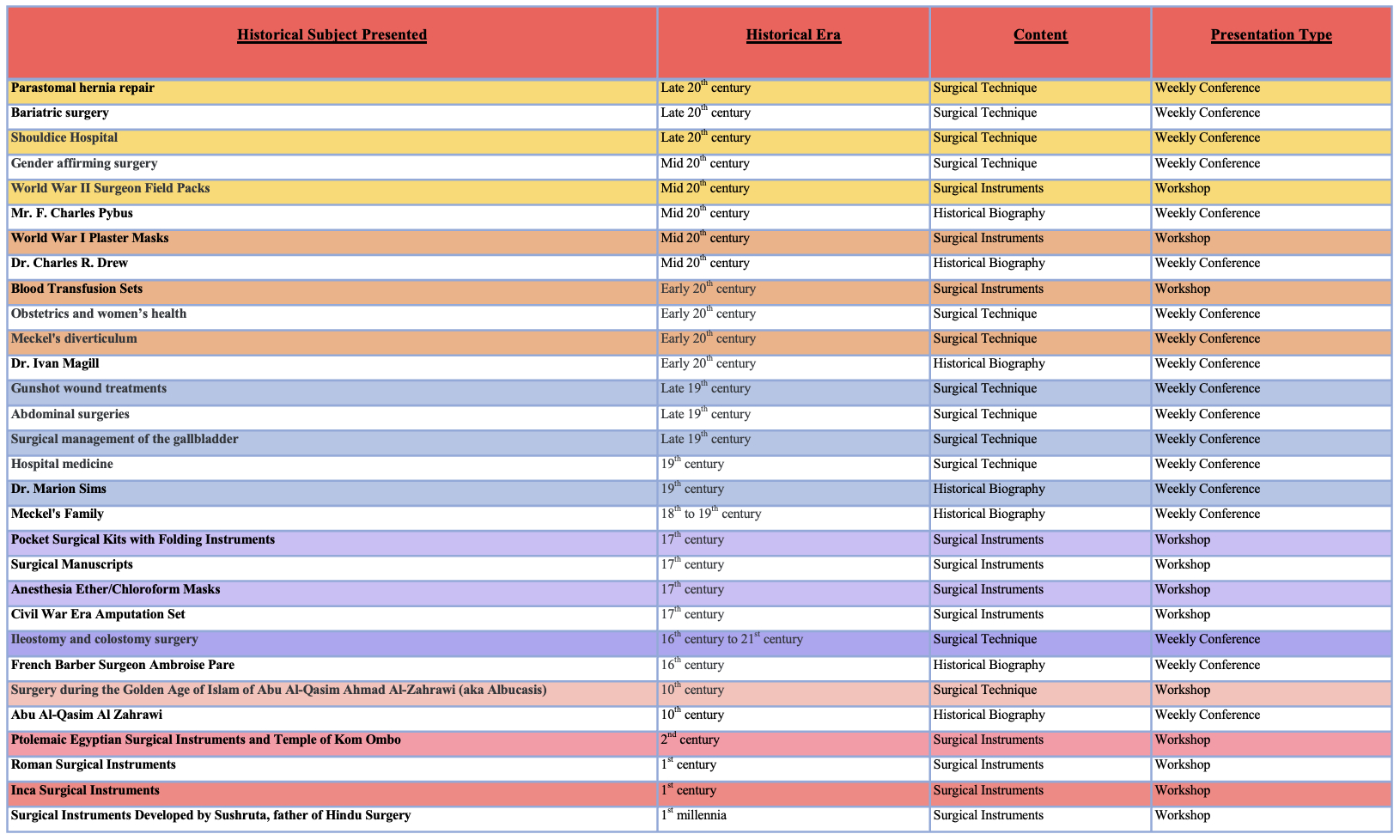Back to 2024 Abstracts
INCORPORATING THE HISTORY OF SURGERY INTO SURGICAL SKILLS WORKSHOPS AND FLIPPED CLASSROOM CONFERENCES TO PROMOTE MEDICAL STUDENT INTEREST IN SURGERY
Jessica Brierton
*, Paarth B. Dodhiawala, Moretta Nielson, Michelle Roof, Peter Kernahan, James V. Harmon
University of Minnesota Twin Cities School of Medicine, Minneapolis, MN
Background:
Over the past 15 years, our medical school has supported a student-led General Surgery Interest Group (GSIG) which holds weekly teaching conferences that encompass case-based surgical topics in a flipped-classroom model, along with surgical workshops. We have begun to incorporate the historical background of surgery practice and techniques, as it relates to the case-based discussions of patients who presented to our General Surgery and Trauma services, to encourage student appreciation of advancements in the art and science of surgery and promote overall interest in a surgical career. Medical students present both the surgical case details and historical background, receiving guidance and feedback from students, residents, and faculty. The flipped classroom format, as an alternative to didactic lectures, requires students to research the topics, which builds independent learning skills and gives students an opportunity to actively engage with their interest in surgery and present to their medical student colleagues.
Objective:
Our objective is to promote medical student education and interest in the history of surgery, increase professionalism and foster interest in a surgical career through student-led workshops and flipped classroom weekly conference meetings.
Methods:
During the teaching conferences and skill workshops, medical students present on historical surgical techniques, instruments, and surgeons (Table 1). An email survey was administered to medical students using the student group listserv to assess the impact of incorporating the history of surgery into the curricula. The two questions utilized multiple-choice response options based on Likert Scales.
Results:
Thirty history of surgery topics were presented to medical students. Of these, 60% were presented during weekly teaching conferences. Of the historical topics discussed, 40% focused on historical surgical techniques, 37% focused on historical surgical instruments and 23% illustrated a surgeon's individual historical contribution to surgery (see Table 1). Thirty-one students completed a survey regarding the incorporation of the history of surgery. n=28 students (93%) indicated that learning the history of surgery for future surgeons is “highly essential� or “essential�; 90% “strongly agree� or “somewhat agree,� that learning the history of surgery further stimulated their interest in surgery as a career (see Graph 1).
Conclusion:
Thirty unique historical surgery topics from various eras have been incorporated into the student-led, flipped classroom presentations and workshops organized by the University of Minnesota GSIG. Overall, our survey responses indicate a high level of student satisfaction with the incorporation of history of surgery topics and demonstrate the inclusion of these historical topics supports medical student interest in surgery.

Table 1. List of history of surgery topics included in GSIG weekly conferences and workshops.
Back to 2024 Abstracts
